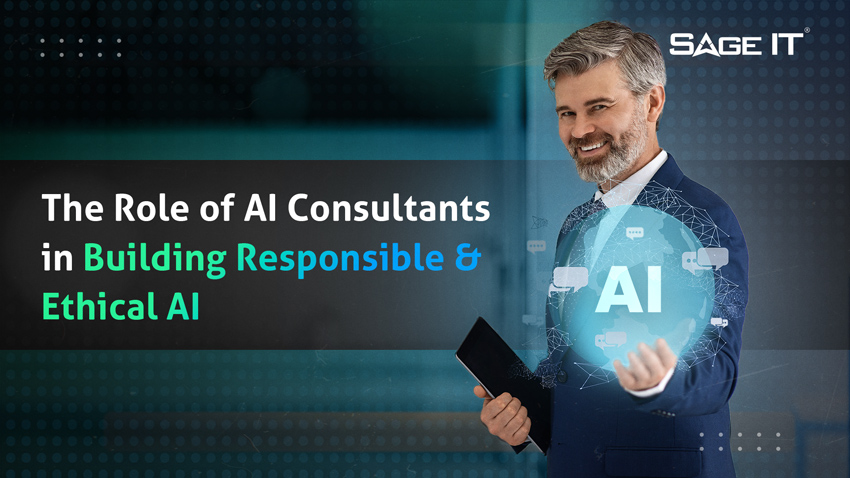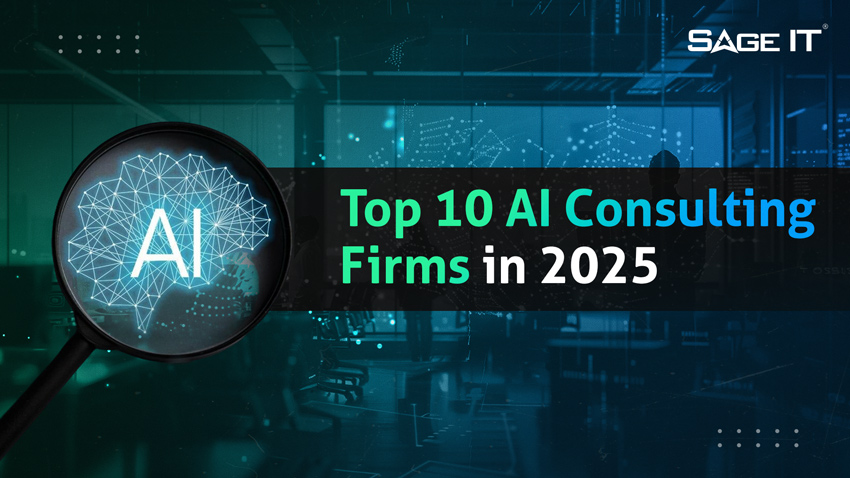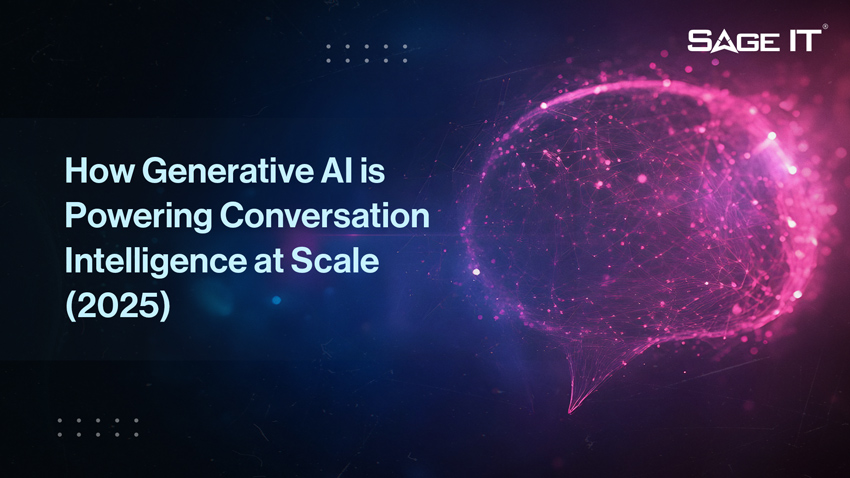Generative AI is a major breakthrough in artificial intelligence, empowering machines to create new content like text, images, music, and videos by learning from existing data. Businesses are increasingly leveraging generative AI services to automate complex tasks, enhance customer experiences, and develop innovative products and services. Unlike traditional AI, which primarily focuses on analyzing and classifying data, generative AI can produce original content that mimics human creativity. This transformative technology is being applied across various sectors, from art and entertainment to healthcare, opening up a world of new possibilities.
Popular Generative AI Tools
Generative AI models have made a significant impact across various fields, each offering unique features and capabilities.
ChatGPT, created by OpenAI, is a widely recognized generative AI tool known for producing human-like text from input prompts. It is versatile and used in various applications, including customer service chatbots, content creation, and coding assistance. ChatGPT’s ability to generate coherent and contextually relevant text makes it valuable for both businesses and individuals.
DALL-E, also developed by OpenAI, generates images from textual descriptions. This tool creates detailed and imaginative images from simple text prompts, which is beneficial for graphic design, advertising, and entertainment. For example, an artist can describe a scene, and DALL-E will produce a visual representation, saving time and sparking creativity.
Google Bard focuses on generating text with an emphasis on dialogue and conversational AI. Bard uses advanced natural language processing to create interactive and engaging conversational agents. It is commonly used in virtual assistants, customer support, and educational applications, providing users with informative and interactive experiences.
Now that we’ve looked at top generative AI tools like ChatGPT, DALL-E, and Google Bard, let’s see how these technologies are being used in the real world to change business and industry.
Applications of Generative AI
Generative AI’s wide-ranging applications in business and industry demonstrate its transformative potential. Many organizations are turning to AI business consulting to align these technologies with real strategies, ensuring adoption drives measurable outcomes rather than experimental use cases. To learn more about how enterprises are specifically leveraging this technology, you can read our in-depth guide on Generative AI in the Enterprise: Promise, Challenges, and Success.
Business Applications:
- Customer Service and Support. AI chatbots like ChatGPT provide instant responses to customer queries, enhancing satisfaction and reducing the workload on human agents.
- Fraud Detection. Generative AI analyzes transaction patterns to identify suspicious activities and prevent fraud.
- Marketing and Content Creation. Businesses utilize generative AI to automate content production, including articles, social media posts, and marketing materials. This streamlines workflows, saves time, and ensures brand consistency.
Industry-Specific Uses:
- Healthcare. Generative AI aids in medical imaging and diagnosis by creating detailed scans and predicting patient outcomes. It also accelerates drug discovery by simulating chemical reactions to identify potential new drugs.
- Finance. Generative AI models analyze market trends and generate investment insights, empowering traders to make more informed decisions.
- Entertainment. The entertainment industry harnesses AI to craft realistic animations and special effects, pushing the boundaries of visual storytelling.
- Materials Science. Generative AI predicts the properties of new materials, expediting the development of stronger and more sustainable substances.
Generative AI has many uses in everyday business and specific industries, showing its great potential. Now, let’s look at the real benefits it can bring to companies and people.
Benefits of Generative AI
Generative AI provides numerous benefits that boost creativity and productivity while improving the quality and availability of training data through synthetic data creation.
Improved Creativity and Productivity: Generative AI automates creative tasks, making it faster and easier to create top-notch content. For instance, AI models such as ChatGPT can write clear and relevant text, assisting writers and marketers in producing content rapidly. This automation also applies to visual arts using tools like DALL-E, which can generate intricate images from basic text descriptions. This helps artists explore new creative avenues without starting from the beginning. By saving time and effort in content creation, generative AI enables human creators to concentrate on more challenging tasks, boosting productivity and innovation across different industries.
Synthetic Data for Training: Generative AI is also crucial for data augmentation by creating synthetic data. This is particularly useful when real data is limited, expensive, or sensitive. Synthetic data can replicate real-world data without exposing sensitive information, making it perfect for training machine learning models. In healthcare, for instance, synthetic medical records can train AI models without compromising patient privacy. In autonomous driving, synthetic images of road conditions help train self-driving car algorithms, enhancing their performance in different scenarios. The ability to generate high-quality, realistic data helps overcome the limitations of traditional data collection methods and speeds up the development and deployment of AI systems.
Generative AI has many benefits, but it’s important to recognize and deal with its challenges and limits. We’ll look at some of these problems to make sure we use it responsibly and ethically.
Challenges and Limitations of Generative AI
Generative AI, while powerful, has several challenges and limitations that need careful management for responsible use.
Ethical Issues and Biases: Generative AI may create biased or harmful content by learning from data that contains biases. For instance, if the training data includes biased language or stereotypes, the AI might repeat these biases in what it produces. To be fair and avoid harmful stereotypes, it’s crucial to carefully choose data and keep checking for problems. Also, there’s a risk of misuse, like making deepfakes or spreading false information, which brings up big ethical worries.
Legal and Regulatory Challenges: There are also legal and regulatory issues with generative AI. Current laws are struggling to keep pace with the rapid development of AI technology. Questions about intellectual property rights, data privacy, and accountability for AI-generated content remain unresolved. For example, who owns the rights to AI-created content? How should privacy laws apply to synthetic data that resembles real-world information? Governments and regulatory bodies are starting to address these issues, but comprehensive rules are still being developed.
Technical Limits: Generative AI models require lots of data and powerful computers, which can be expensive and harm the environment. They often need access to personal data, raising privacy concerns. Keeping data safe and following privacy laws is very important. Also, these models can sometimes make mistakes or create strange results, so they need continuous improvement and careful checking.
Generative AI faces challenges and limitations, especially concerning ethics and bias. These issues highlight the importance of careful thought and proactive steps. Here are some strategies to reduce bias and ensure fairness in generative AI systems.
Ethics and Bias in Generative AI
Generative AI, while powerful, has ethical challenges that need to be addressed to ensure fair and unbiased results.
Mitigating Bias: Bias in generative AI often comes from the data used to train these models. Training data might include biases related to race, gender, or socioeconomic status, which the AI can then reproduce. To identify and reduce these biases, several strategies can be used:
- Diverse and Representative Datasets: Use training data that includes a wide range of populations. This reduces the risk of the model learning and repeating biases.
- Bias Detection Tools: Implement tools to detect bias in AI models. These tools can analyse the outputs for bias and provide feedback for improvements.
- Regular Audits: Conduct regular checks of AI models to find and fix biases. This involves testing the models with various inputs and monitoring their performance for any biased patterns.
Ensuring Fairness: Maintaining ethical standards in generative AI requires several techniques to make sure the AI systems are fair and unbiased:
- Transparent Algorithms: Use algorithms that clearly show how decisions are made. This helps build trust and allows for better scrutiny of the model’s fairness.
- Inclusive Design Processes: Involve diverse teams in the design and development of AI models. Different perspectives can help identify potential biases and ethical issues early in the development process.
- Fairness Metrics: Set and monitor fairness metrics to ensure AI models treat all user groups equally. These metrics can include equal error rates for different demographic groups and balanced accuracy.
As we explore the ethical and technical challenges of generative AI, it’s important to see how it differs from traditional AI. By comparing these two approaches, we can better understand what makes generative AI special.
Generative AI vs. Traditional AI
Generative AI and traditional AI are two different approaches to artificial intelligence, each with its own strengths and limitations.
Key Differences and Comparisons: Traditional AI looks at existing data to predict outcomes, classify information, or do tasks. For example, machine learning in traditional AI uses past data to recognize patterns and make decisions. If it sees a picture of a cat, traditional AI can say it’s a cat. Generative AI goes further—it uses what it learns from data to create new content. For instance, generative AI can make a new picture of a cat.
Traditional AI models are commonly used for tasks such as image recognition, speech recognition, and recommendation systems. Generative AI models, on the other hand, are used for content creation, such as generating text, images, music, or even code. This ability to create original content opens up new possibilities in fields like art, entertainment, and design.
Pros and Cons: Traditional AI is great for tasks needing careful analysis and decisions based on existing data. It’s used in finance, healthcare, and retail for predictions, diagnoses, and personalized suggestions. But it only works with the data it knows and can’t create new things.
Generative AI is good at being creative and coming up with new ideas, designs, and solutions. This makes it useful in creative fields and other areas. But it needs lots of data and powerful computers, and it can sometimes create biased or strange results. There are also ethical worries, like making deepfakes, which are tough issues.
Future Trends in Generative AI
Generative AI is changing fast and bringing new tech that creates many opportunities and affects different industries. To learn more about how these changes can shape your career, check out our article on Future-Proof Your Career with Generative AI.
Emerging Technologies and Advancements: The field of generative AI is experiencing exciting innovations. A major development is the creation of multimodal AI models that can handle and produce different types of data, like text, images, and audio, all at once. Technologies such as OpenAI’s GPT-4 and Google’s Multimodal Transformer are expanding what AI can do. Another important area is making AI models more understandable and controllable, helping users to better guide the AI’s outputs.
Predicted Industry Impacts: Generative AI is expected to transform many industries. In healthcare, it can improve diagnostic accuracy and personalize treatment plans by analysing complex medical data and generating insights. The entertainment industry will benefit from more lifelike animations and special effects, while marketing will see more customized and engaging content. Additionally, generative AI can help in drug discovery by simulating molecular structures and predicting their effectiveness, speeding up the research process.
Sustainability and Efficiency: As AI demand grows, sustainable practices become more important. Developing energy-efficient AI models helps reduce the environmental impact of large-scale computations. Techniques like model pruning, quantization, and using renewable energy sources for data centres are becoming crucial. These practices not only help the environment but also make AI technology more accessible and cost-effective.
The Growth of Advanced Generative Models: Progress in deep generative models is making content creation more realistic and sophisticated. Models such as Generative Adversarial Networks (GANs) and Variational Autoencoders (VAEs) are getting better at making top-notch images, music, and videos. These deep models are also teaming up with other AI tech, like reinforcement learning, to make smarter and more flexible systems.
Best Practices for Using Generative AI
To use generative AI well, you need to focus on data quality, efficient model deployment, and building trust in AI results.
Ensuring Good Data and Transparency: Generative AI works best with high-quality data. Use diverse and representative datasets to teach the model from many examples and reduce biases. Keep updating these datasets to keep the AI’s results accurate and relevant. It’s also important to be clear about where your data comes from and how you clean and prepare it. This helps users trust the AI system.
Setting Up and Running AI Models: Getting AI models to work efficiently involves a few steps. Tuning the model’s settings with things like grid search or random search makes sure the AI works well. Using scalable solutions like Docker for managing programs and Kubernetes for organizing them helps too. Keeping an eye on how well the AI is doing in real-time is also important to fix any problems quickly and make sure it’s reliable.
Trust and Reliability: People need to trust what AI systems do. Making sure how the AI makes decisions is clear is important. Techniques like SHAP or LIME can help explain why the AI chose something. Regularly checking the AI for biases and mistakes is also important. Keeping an open conversation with users about what the AI can and can’t do helps too. Following ethical rules for AI, like fairness, accountability, and being clear (FAT), keeps trust and reliability strong.
Conclusion
Generative AI is a powerful technology that creates new content by learning patterns from existing data, unlike traditional AI which focuses on classifying data. Tools like ChatGPT and DALL-E demonstrate its broad applications. Despite its benefits, generative AI faces challenges such as ethical concerns, biases, and technical issues. To use it effectively, it’s important to ensure data quality, deploy models efficiently, and build trust. Evaluating generative AI models involves checking for accuracy, diversity, and coherence.
Generative AI could change a lot of areas, making things better and more productive. Dealing with its challenges in a smart way can make sure we get the most out of it. What do you think about generative AI? Share your thoughts in the comments!

































